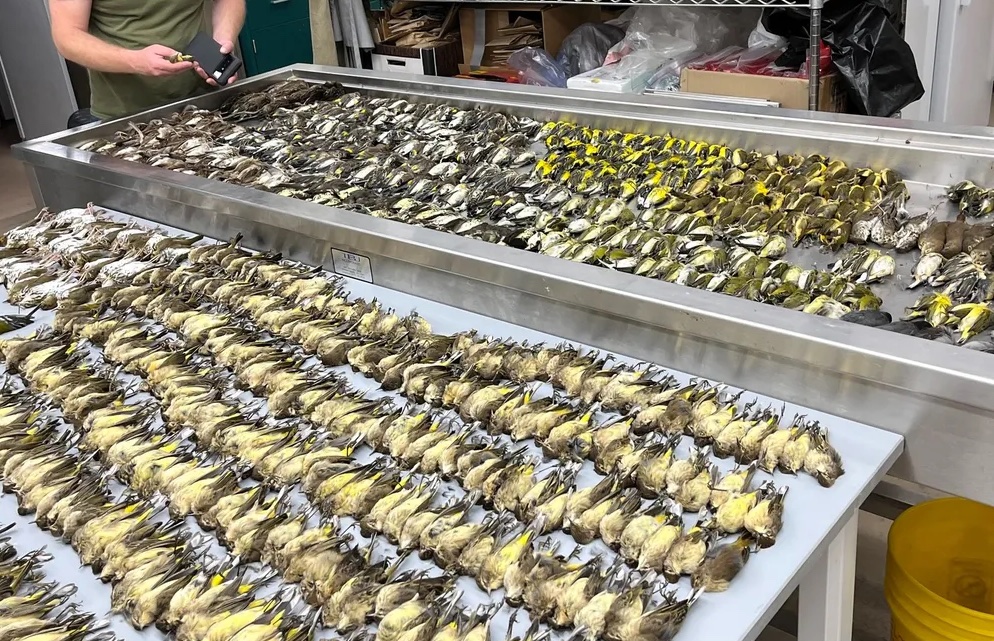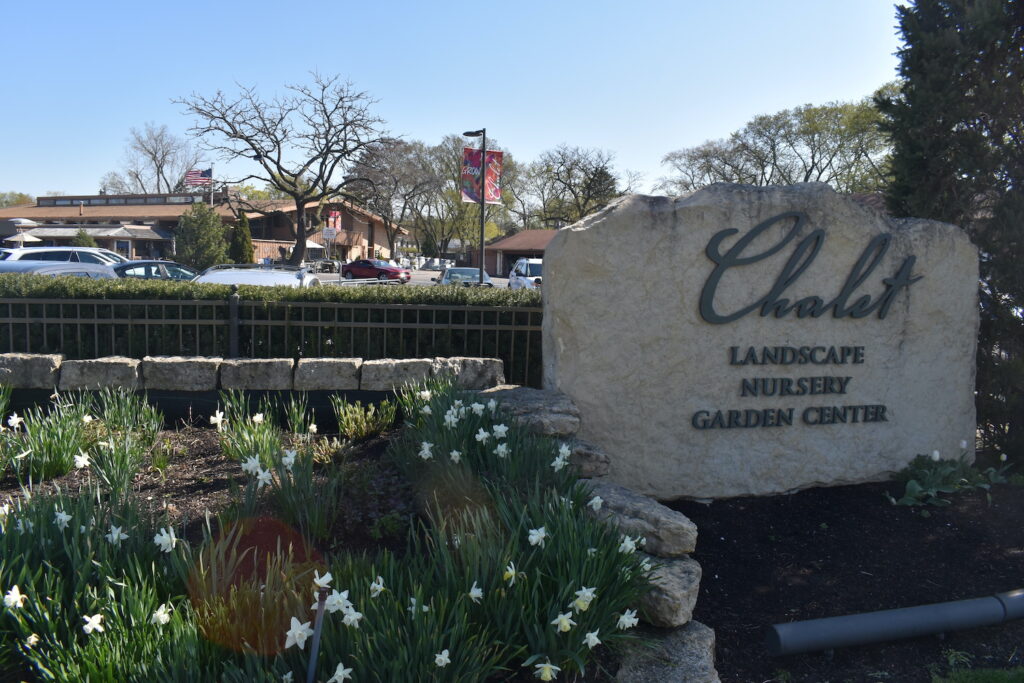
A group of volunteers thinks Wilmette can get more bird-friendly and have the data to back it up
Chicago made unsavory headlines in October 2023 when the Field Museum reported 1,000 migrating birds died in one night from collisions into the glass facade of McCormick Place Lakeside Center.
About 20 miles to the north, a group of eco-conscious residents is trying to avoid the same result.
Wilmette’s newest residential development is six-story Optima Verdana, 1210 Green Bay Road, a luxury-apartment complex featuring a distinct glass exterior. In 24 days in October 2023, local volunteers said they found evidence of 18 bird strikes, resulting in at least 12 bird deaths, outside of Optima Verdana, providing The Record with photographs to support the data.
In contrast, they said zero dead or stunned birds were found during the same time frame outside of The Residences of Wilmette, a similarly sized but bricked residential complex nearby, at 617 Green Bay Road.
Two of the volunteers, Amanda Nugent and Karen Glennemeier, told The Record that their goal is to work with Optima on improving its bird protections and inform Village officials, who are in the process of considering a second Optima project that also has plans for a glass-heavy exterior.
“What are creative ways we can address our concerns and meet in the middle,” Nugent said. “… How can we make an impact in Wilmette on a building that is going to stay forever? What kind of decision are we going to make based on this information?”
Nugent, Glennemeier, and fellow volunteers Peg Cartier and Mary Ellen Fausone sent a letter with its findings to Optima management and the Wilmette Village Board. (Wilmette Trustee Gina Kennedy has also participated with the group in monitoring the bird collisions.)
Optima President and Chief Operating Office David Hovey Jr. told The Record via email that building personnel monitor bird collisions at Optima Verdana, walking the building grounds each day. He said they have recorded seven bird strikes since July 2023.
Hovey Jr. said Optima has reviewed the letter from the Wilmette volunteers and company employees have held “productive” conversations with members of the group. Optima, he said, plans to address the issue moving forward.
“Optima recognizes the importance of this issue to the Village and residents of Wilmette,” Hovey Jr. wrote. “We are in the process of developing our bird strike prevention plan and will continue to work with the Village of Wilmette as well as listen to the bird group to hopefully come up with a plan that everyone will be happy with.”
What is the problem?

The Chicago area is within the flyway of many migratory birds traveling from Canada to South America and back each year.
During their travels, birds can have trouble identifying a glass surface, whether they are attempting to reach attractive areas beyond the glass, such as plantings or shelter, or images reflected in the glass, such as trees, water or more sky, according to the Chicago Bird Collision Monitors.
Between 2010-2014, CBCM recorded evidence of about 6,000 bird collisions each year with a majority (67%) of those strikes resulting in deaths. The American Bird Conservatory says up to 1 billion birds die each year following glass collisions in the United States. Most collisions occur during spring and fall migrations and are the most dangerous month tends to be October. A wide range of birds, from hawks to hummingbirds, are susceptible to glass collisions, but the most common include white-throated sparrows, ovenbirds, warblers, thrushes and brown creepers, according to the CBCM.
Lakefront development can amplify the problem. Glennemeier explained that many birds migrate at night, using the stars and moon as guidance. Lights inside buildings can disorient them. In the morning, birds often seek land to forage and head toward the lakeshore, making the glass reflections a danger.
Libby Hill, of Evanston, volunteers with the CBCM and started the resident group Bird-Friendly Evanston, which was instrumental in the City’s passing of bird-friendly building regulations in 2022.
Hill said that modern building design often includes glass exterior and that CBCM volunteers monitor a significant bird-strike problem at Northwestern University, which has many glass buildings and many along the lakefront.
“I think it’s unfortunate that people construct buildings that they think are beautiful that end up being a danger to wildlife, and we don’t seem to be able to stop that,” she said. “The more information we have, the more monitoring we have, the more aware we can make people of the problem and how to correct it.
“When you start losing birds, you’re going to start losing a lot of our (ecological) system — the whole system we live in, and it’s not a good idea for us to get in the middle of that system and disrupt it.”
While large-scale buildings provide the largest numbers of bird strikes, Hill said the grander problem, “collectively,” is homes and nighttime lighting during migration periods.
Back in Wilmette

Optima Verdana features bird-friendly glass on its first three floors, per a requirement from the Village Board, and initial designs for its new Wilmette project also includes the feature, which consists of subtle dots on the surface of the glass.
Hovey Jr. said the company believes “bird protection is an important part of sustainable design.”
“Optima is deeply committed to sustainability as evidenced by our track record of our past projects which includes numerous national-level sustainability awards,” he wrote.
Nugent and Glennemeier think Optima can improve its bird-friendly design. Nugent said she hopes all developers with glass buildings consider improved bird-friendly features, such as more pronounced film on the glass or nonreflective material in between window panes.
They want to continue to use their data to inform the conversation about bird strikes while Optima Verdana’s second development continues its public-review process. Glennemeier said protecting birds is not inherently anti-development, and the group’s goal is not to shut down Optima or any future development.
“It’s about trying to be consistent with our values and state of priorities,” she said. “There are other ways to make buildings. We’re not asking for some sort of hardship for the community. We’re just asking for different kinds of buildings.”
The Record is a nonprofit, nonpartisan community newsroom that relies on reader support to fuel its independent local journalism.
Become a member of The Record to fund responsible news coverage for your community.
Already a member? You can make a tax-deductible donation at any time.

Joe Coughlin
Joe Coughlin is a co-founder and the editor in chief of The Record. He leads investigative reporting and reports on anything else needed. Joe has been recognized for his investigative reporting and sports reporting, feature writing and photojournalism. Follow Joe on Twitter @joec2319


